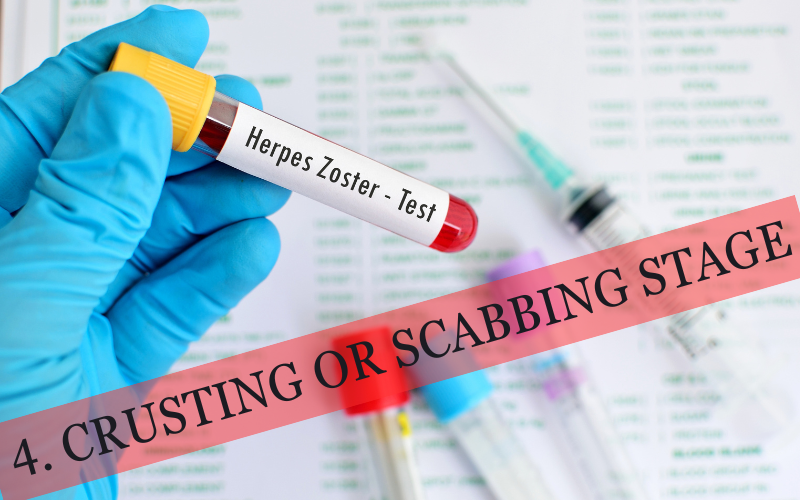4. Crusting or Scabbing Stage: Nature’s Healing Touch

In the grand narrative of shingles, the crusting or scabbing stage is where nature’s restorative powers come into play. The once fluid or pus-filled blisters now give way to crusts or scabs, indicating the body’s healing process at work.
As the pustules dry out, they form these crusty coverings. It’s nature’s band-aid, protecting the underlying skin as it heals. These crusts might appear dark brown or even black, contrasting with the surrounding skin.
While the sight of the crusts might not be particularly appealing, they play a vital role. They act as a shield, protecting the tender, healing skin underneath from external irritants and potential infections.
It’s imperative to let nature take its course during this stage. Picking at or prematurely removing the crusts can not only delay healing but also increase the risk of scarring. Letting them fall off naturally ensures optimal healing.
This stage brings with it a sigh of relief. The worst is over, and while the journey to complete recovery might still have some way to go, the end is in sight. The body has weathered the storm, and tranquility is on the horizon. (4)